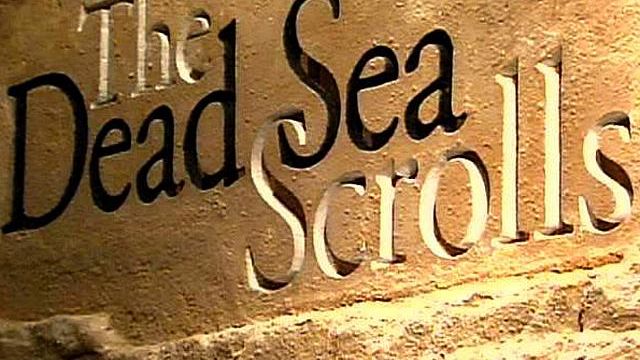Local News
New exhibit reveals mysteries, intrigue of Dead Sea Scrolls
Fragments of biblical manuscripts dating from 2,000 years ago are on display at the North Carolina Museum of Natural Sciences.
Posted — UpdatedRALEIGH, N.C. — In March 1947, Bedouin shepherds looking for lost sheep – and uncertain about what they might find – threw stones inside a dark cave near the northwest shore of the Dead Sea in what is now Israel.
The rocks hit and broke clay jars nestled inside the cave, revealing several aging parchments. Looking to see if they were of any value, the shepherds traveled to nearby Bethlehem and sold them for 20 English pounds.
Little did they know that they had happened upon some of the earliest manuscripts, some dating to as early as 250 BC, of the Hebrew bible – to Christians, the Old Testament.
Over the next eight years, religious scholars, archaeologists and historians would discover hundreds of pieces of what are now known as the Dead Sea Scrolls in 11 caves of the ancient settlement of Qumran.
Among their findings: more than 200 biblical manuscripts representing every book of the Old Testament, other religious works, legal documents, and literary texts – some of which now sit in a dimly lit, climate-controlled room at the North Carolina Museum of Natural Sciences in downtown Raleigh.
"Many of these pieces have never been on public display before, and a lot of the artifacts have not left Israel before," said Dr. Risa Levitt Kohn, associate professor of Hebrew Bible and Judaism at San Diego State University's religious studies department, director of the Jewish Studies Program and a consultant to the science museum.
The Dead Sea Scrolls exhibit, running until Jan. 4 with extended hours, features 12 scrolls – four of which have never been publicly displayed – and more than 100 artifacts from the Qumran ruins, everyday items from pottery to leather to sandals to basketry.
The exhibit, on loan from the Israel Antiquities Authority, was created specifically for the museum and will never be recreated elsewhere.
"The general public can actually come and see authentic pieces that are 2,000 years old and recognize the biblical books from which they came and be able to experience this firsthand," Kohn said. "I think, for people living in North Carolina, this is a once-in-a-lifetime opportunity."
Six of the scroll fragments — among them are the Ten Commandments, the books of Genesis and Isaiah, and a Jewish book called Jubilees — will be on display three months and then switched out with six others.
The ancient texts are objects of great intrigue, mystery and debate among scholars, who disagree on the relics' origins, their authors and their interpretations of Jewish history and Christian origins.
Some argue the documents were taken to the caves and stored away for safekeeping; others say they were written by the inhabitants of Qumran.
That’s why the museum is hosting a series of eight lectures by experts across the state, nation and world to focus on the scrolls’ origins, place in history and other questions surrounding them.
The first lecture on July 17 focuses on who wrote the scrolls and why. Others topics, which run through the rest of the year, explore their role in early Christianity and the conservation of the manuscripts.
"We introduce all these theories and let individuals make up their own minds," Levitt Kohn said.
The scrolls are also objects of significance and importance and are widely considered to be among the greatest archaeological discoveries ever made.
“I’m sure that everyone who sees this will be touched, somehow,” said Pnina Shor, who’s been in charge of preserving the scrolls for the Israel Antiquities Authority for more than a decade.
Part of the reason for putting the pieces of parchments and related artifacts on display, she says, is to share with people the Israeli culture and the sense of community in the greater world.
“For me, this exhibition is supposed to bring people together to show the people of Raleigh, in this case, our common origins, to show that these scrolls, written 2000 years ago, show our common heritage,” Shor said.
“We’re here to bring culture. We’re here to bring the common heritage of the western world.”
• Credits
Copyright 2024 by Capitol Broadcasting Company. All rights reserved. This material may not be published, broadcast, rewritten or redistributed.





